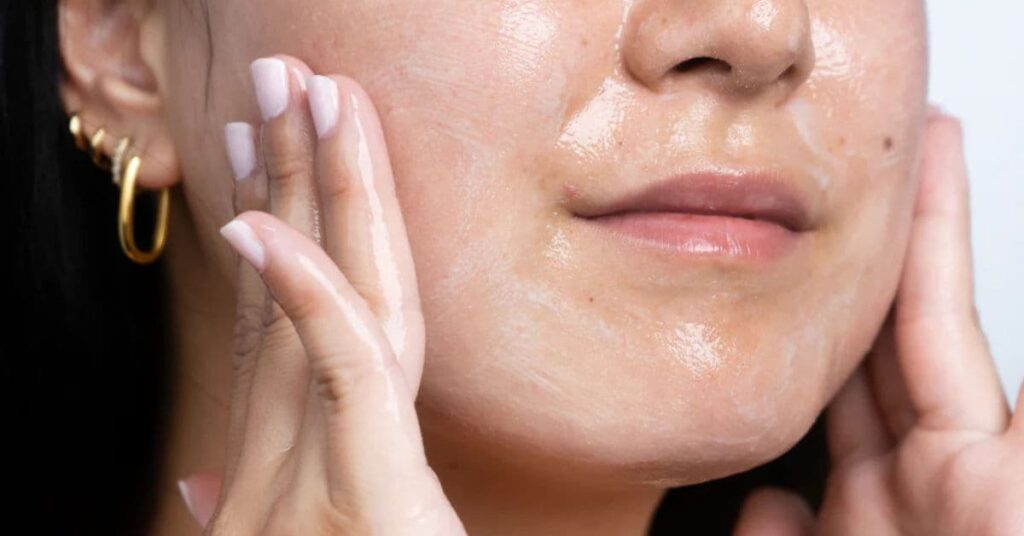Creating an effective skincare routine can feel overwhelming with so many products available, but a consistent and well-structured routine is essential for healthy, glowing skin. Dermatologists recommend routines tailored to individual skin types and concerns, focusing on cleansing, moisturizing, protecting, and treating specific conditions. This guide outlines the steps for building a dermatologist-approved skincare routine that can work for most people, regardless of skin type.
Identify Your Skin Type

Before building a routine, it’s crucial to understand your skin type to choose the right products:
- Normal Skin: Balanced, not too oily or dry.
- Oily Skin: Prone to shine and breakouts due to excess sebum.
- Dry Skin: Lacks moisture and can feel tight or flaky.
- Combination Skin: Oily in some areas (like the T-zone) and dry in others.
- Sensitive Skin: Easily irritated by products or environmental factors.
Morning Skincare Routine
Step 1: Cleanser
Use a gentle, pH-balanced cleanser to remove oil and impurities that accumulate overnight.
- For oily skin: Look for a gel or foaming cleanser.
- For dry skin: Choose a hydrating cream cleanser.
Step 2: Toner (Optional)
Toners can restore the skin’s pH balance and prepare it for treatments. Opt for alcohol-free formulas to avoid irritation.
Step 3: Serum
Antioxidant serums, such as Vitamin C, protect the skin from environmental damage and brighten the complexion.
Step 4: Moisturizer
Hydration is key, regardless of your skin type.
- Oily skin: Use a lightweight, non-comedogenic moisturizer.
- Dry skin: Choose a richer moisturizer with ingredients like hyaluronic acid or ceramides.
Step 5: Sunscreen
Dermatologists emphasize the importance of daily sunscreen use. Choose a broad-spectrum sunscreen with SPF 30 or higher to protect against UVA and UVB rays.
Evening Skincare Routine
Step 1: Cleanser
Double cleansing is ideal in the evening, especially if you wear makeup. Use an oil-based cleanser followed by your regular cleanser to remove all impurities.
Step 2: Treatment (Serums or Actives)
Depending on your skin concerns, this is the time to apply treatments:
- Retinol or Retinoids: Help with anti-aging and acne.
- AHAs/BHAs: Exfoliate and unclog pores (use 1-2 times a week).
- Niacinamide: Reduces redness and strengthens the skin barrier.
Step 3: Eye Cream (Optional)
If you experience puffiness, dark circles, or fine lines, an eye cream can target those issues.
Step 4: Moisturizer or Night Cream
Apply a nourishing moisturizer or night cream to lock in moisture while you sleep.
Weekly Additions to Your Routine

- Exfoliation: Exfoliate 1-2 times per week to remove dead skin cells. Chemical exfoliants (like AHAs or BHAs) are often more effective than physical scrubs.
- Face Masks: Use hydrating or detoxifying masks depending on your skin’s needs.
- Spot Treatments: For occasional breakouts, apply spot treatments with salicylic acid or benzoyl peroxide.
Skincare Routine Tips from Dermatologists
- Patch Test New Products: To avoid allergic reactions, test new products on a small area of skin first.
- Consistency is Key: Skincare takes time—results may appear after several weeks of consistent use.
- Adjust with Seasons: Modify your routine based on seasonal changes, like using richer moisturizers in winter.
- Don’t Overdo It: Using too many active ingredients can irritate the skin. Stick to a simple routine and introduce new products gradually.
Building a dermatologist-approved skincare routine doesn’t have to be complicated. By focusing on cleansing, moisturizing, treating specific concerns, and protecting your skin from sun damage, you can create a simple yet effective routine. Tailor your routine to your skin type, and remember that consistency and patience are essential for achieving long-term results.
